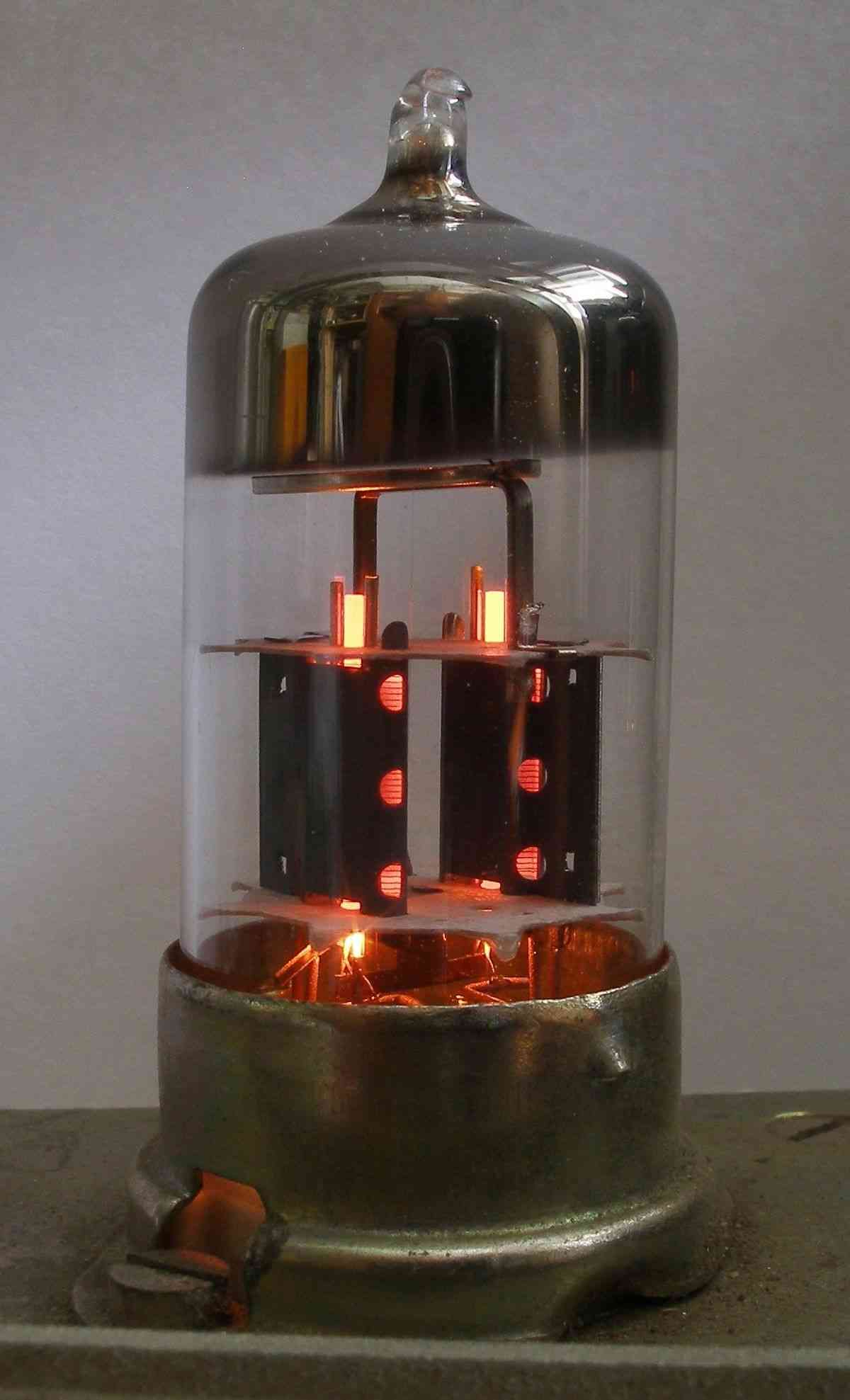Whenever we read the word “electronics,” an image of household electronic gadgets come into our mind. Those gadgets play a role so dominant that it has shaped life in the post-electronic era. But the basic principle is all the same at the core of all electronic devices. They work by manipulating the flow of electrons. Electronics is a branch of physics where we study the emission, behavior and effects of electrons.
Vacuum Tube Era
Even though the existence of electrons was discovered long ago by observing their effect on other objects, it was not possible to manipulate them for our advantage until John Ambrose Fleming found a way. In the year 1883, Thomas Alva Edison found that electrons can flow from one metallic conductor to another inside a vacuum. This is known as the “Edison effect.” Utilizing this principle, John invented the vacuum diode in 1904 which paved the way for modern electronics. The vacuum diode consists of a cathode and an anode which is the simplest form of a vacuum tube. For this marvelous invention, J.A Fleming is regarded as the father of electronics.


In 1906, Lee de Forest invented an improved version of the diode; it had three electrodes thus was named “triode.” A triode had three electrodes, an anode, a cathode and a grid.

Triode could be used as a signal amplifier, thus had a significant impact on the then radio communication technology.
As well as allowing long-range radio transmissions, vacuum tubes made it possible to develop the first-ever electronic digital computers. One of the most known electronic computers is the Electronic Numerical Integrator and Computer or ENIAC which was built in 1946.

Even though the vacuum tubes made it possible to develop computers and revolutionized the radio communication technology, it was very impractical to use them to create sophisticated machines such as digital computers because of the gigantic size of the devices, low power efficiency of vacuum tubes and high maintenance costs. Those computers were the size of a room and took a few operators to maintain them. Also, vacuum tubes were very fragile and could be damaged by thermal fatigue. So scientists started looking for an alternative that led to the invention of semiconductors.
Age of Semiconductors
In 1947, three scientists at the Bell laboratory, John Bardeen, Walter H. Brattain, and William B. Shockley, invented the first-ever transistor. The electric current in semiconductors is carried by electrons and also by “holes.” Holes are thought to be the carrier of positive charge while electron carries a negative charge. This availability of two types of electric charge carriers in transistors is a valuable property that was exploited in many electronic devices made of semiconductors. Transistors can act as amplifiers thus can be used to replace vacuum tubes. Also, they are lightweight, cheaper to produce, tiny in size compared to large vacuum tubes, more power-efficient and could operate at very high temperatures. So, they started replacing vacuum tube devices very soon after the discovery.

Integrated Circuits
By 1960, computers employed thousands of tiny transistors, which stirred the need for a more compact, easy to navigate system for computers. This led to the invention of Integrated Circuits or IC’s. An integrated circuit is a semiconductor wafer on which thousands if not millions of tiny resistors, capacitors, and transistors, are introduced.
Microprocessors
Advancement in the IC’s led to the invention of microprocessors. Microprocessors contained all the logic, control and arithmetic circuitry needed to perform the functions of a Central Processing Unit (CPU) of a computer. Intel corporation first introduced microprocessors in the year 1970. The invention of microprocessors revolutionized the field of computers. Microprocessors are tiny in size thus it reduced the size of computers. What used to take an entire room only for establishment now takes the same space as a lunch box, and all that with no compromises in speed, performance and efficiency thanks to microprocessors.

By the 1980's, microprocessors were being used in various consumer products such as microwave ovens, cars, cameras and televisions. These multiple applications of microprocessors kept increasing day by day and it was necessary to find a way to integrate all this on a very small circuit board. Thus, the idea of SoC or System on a Chip came into play. An SoC is an integrated circuit that unites all the electronic machinery needed to implement a system on a single chip. We don’t know much about the history of SoC’s because they’re mostly developed by private organizations and are protected by intellectual property laws. The potentials of SoC’s came into limelight with the introduction of ARM “fabless” processors. Chips using ARM cores had tremendous power efficiency compared to other processors and mobile manufacturers were eyeing for such technology. This drove the rapid innovation in SoC’s.
The silicon ARM design could be integrated onto the piece of silicon chips, such as I/O, memory and other processors. So mobile manufacturers started utilizing ARM cores to their own chips and SoC was born. SoC has revolutionized the mobile computing we see today. Our mobile devices, TVs, digital wristwatches everything comes with an SoC.
The journey of electronics is not over yet; it is now at a young age and has so much more to offer. Scientists are pouring more and more efforts in hopes of increasing efficiency in existing electronic devices as well as discovering new uses for age-old electronic principles.
Sources:
- Brief History of Electronics and Its Development. Retrieved from https://www.elprocus.com/know-about-brief-history-of-electronics-and-their-generations/#:~:text=Electronics' actual history began with,until the World War II. on 06/13/2020
- The History of Electronics. Retrieved from https://www.eta-i.org/History of Electronics electricity.pdf on 06/13/2020
- Electronics. Retrieved from https://science.jrank.org/pages/2376/Electronics-History.html on 06/13/2020
- Electronics. Retrieved from https://www.britannica.com/technology/electronics on 06/13/2020
Subscribe to our newsletter to stay updated


